
Just because I was tabulating the book club, I decided to avail myself of the data dump from GoodReads.com where I track all my reads and occasional reviews. Just for fun, I thought I’d rank my own reads for the year. As I don’t have much granularity with a simple 1-5 without decimals, I did a manual ranking. I combined the Fiction and Non-Fiction highlights and attempt to rate the aggregate result. That’s not an easy one, so largely used merely a measure of pure enjoyment with little other factors – memorability is obviously going to be a higher determinant for those earlier in the year.
[table id=7 /]
My Number One: The Glass Hotel
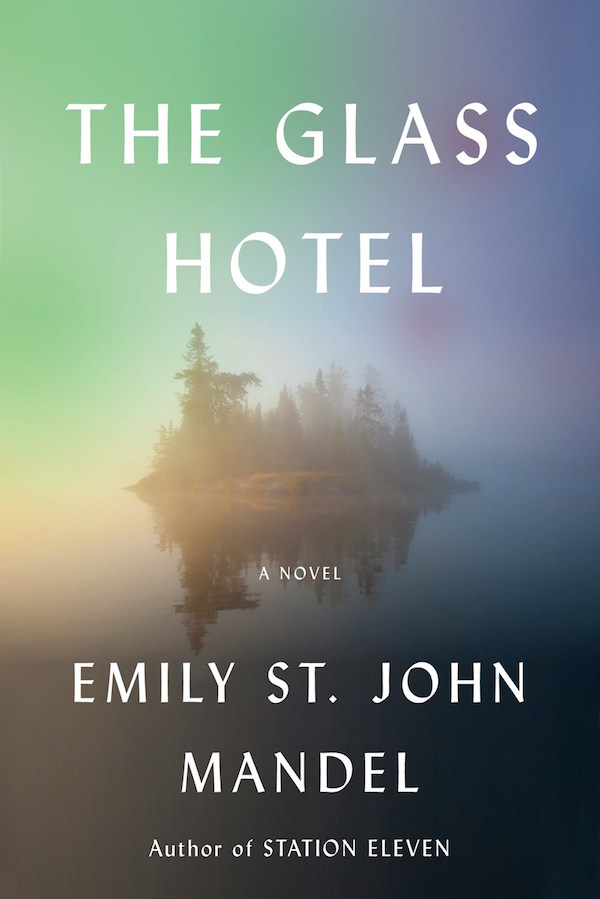
The Glass Hotel was my top read in 2020. It was also the book club’s book of the year. I really enjoyed this book for its unique style (I also loved Station Eleven last year). Additionally, the author manages the narrative arc in a particularly adept fashion giving a Joycean twist of the end being the beginning and allowing for all sorts of wonderful time slides that only add to the novel and don’t confuse the reader. It;’s a mystery/finding-oneself/comment-on-today’s-world sort of tale brilliantly told. A wrote a full review at The Glass Hotel.
No. 2 The Winter Soldier
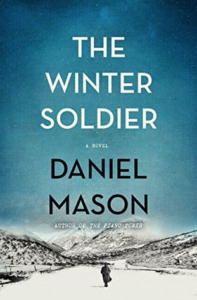
The Winter Soldier is the second of Daniel Mason’s novels that I have read and truly loved. He clearly writes for me and me-types. Unlike the Piano Tuner which was superb in its own right, this is a more deeply introspective novel that challenges the reader throughout to imagine the endpoint. It’s not predictable and is endlessly enjoyable. It;’s not a rosy positive view of the world, but its take on human nature very much is. A few choice characters and a brilliant setting. A strong number two that really challenged for number one. A full review posted at The Winter Soldier.
Third place: Empires of the Sky

Empires of the Sky scored as my highest non-fiction read. I truly enjoyed Alexander Rose’s exploration of the fixed-wing versus dirigible battle for mastery of the air. His clever dual narrative approach worked extremely well and along with a particularly engaging style made this read my top for NF. I would probably say the closest contender to this was God’s Shadow, but the added complexity of the unique intertwining of the two threads earned this a notable nudge. There was something special about this one for me and it remained in my mind after many months. The full review is at Empires of the Sky.
In Fourth place: Three Cheers for Me
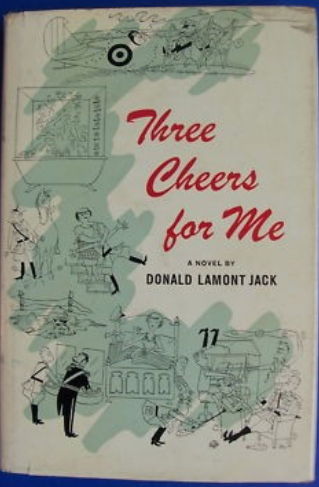
Now. Three Cheers for Me by the late Donald Jack was a re-read as I was struggling to find good reads at the beginning of the first lockdown. I turned to a few favourites and was richly rewarded with works that have resonated with me throughout my life. Three Cheers for me is one of those and a special favourite. In fairness, only a couple of members of the book club found it enjoyable, and most dismissed it as trite and slagged me for my choice. I will always stand over this one. I was introduced to it in my first-year at University and every time I read it I am forced into laughter. It’s a humourously anecdotal look at an individual absolutely oblivious to both the chaos and mirth that he causes and treats the reader to a special experience. On an umpteenth read, it still gives me special pleasure and stayed right up there in the nooks of the year. I have written on this before at Three Cheers and the Wisdom of Bartholomew W Bandy.
Fifth Place: An Honest Man
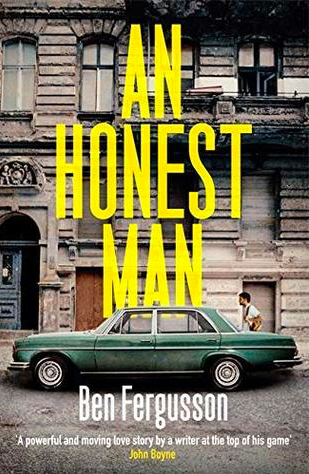
What I really like about this year’s reads is the diversity of experiences that they have given me. I came to An Honest Man based on an attraction to the time period and the location – and then it captured me. Pure engagement. Pure empathy and a real evocation of experience. Fergusson’s writing is alive and draws you and keeps you suspended. The novel is set in a time of turmoil at a geopolitical level, but it is in the extraordinary lives of ordinary individuals that he has pitched a tale that is real, human, and a stunning treat. I reviewed in fully at An Honest Man.
Sixth: Under Darkening Skies
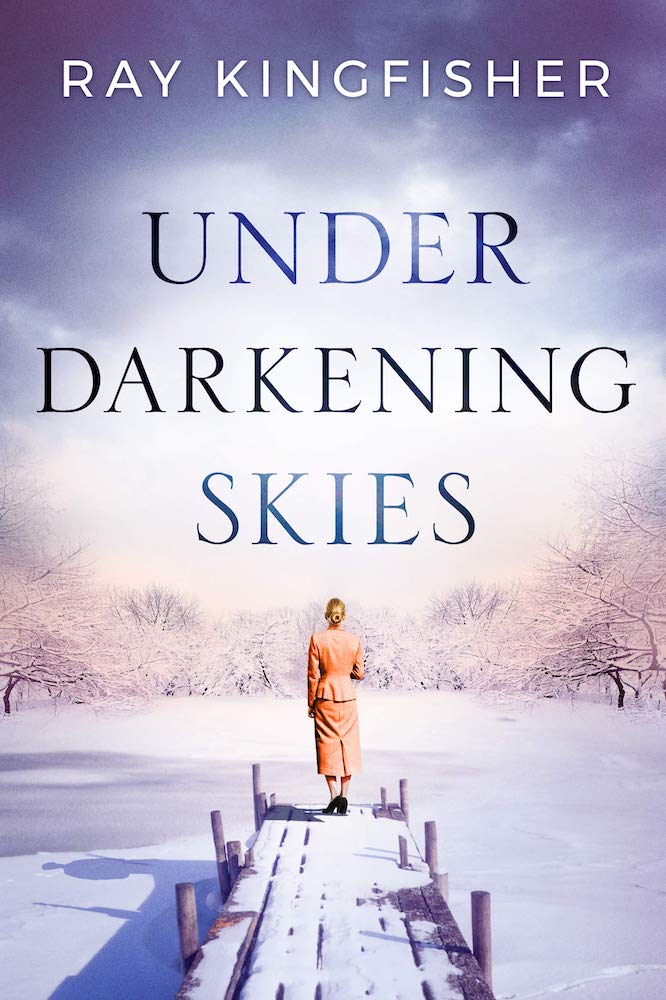
This would sit alongside Winter Soldier in the ‘grand tale well told‘ category. There is an intricate weaving of interspersed narratives and uniquely adept handling of sweeps back and forth through time that avoids any confusion for the reader. In this tale, you have a very clear picture from the start of where this story seems to be going and part of the author’s skill is engaging you in investing in finding out whether it actually turns out as you expect. This is unique and clever and particularly well executed. I am slightly biased to the Canadian element and do read some personal aspects into this but I was enthralled by this one and those who I have recommended it to have been equally impressed. A fuller review at Under Darkening Skies.
Lucky Number Seven: The Paris Hours

This is a recent read and I believe also a fairly recent publish. A tale of intertwined protagonists – ordinary folks with extraordinary stores and lives that bump into
Number Eight: The Humans
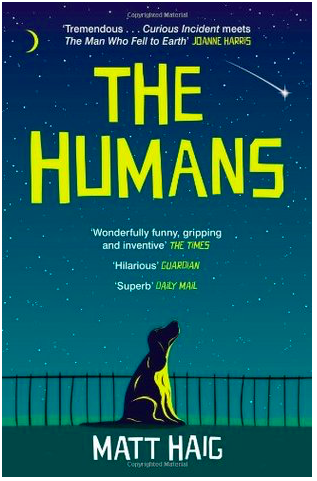
A stunningly inventive tale that explores humanity from the outside in and then through an embodied experience. The Humans is an emotional roller coaster, and wonderfully unpredictable. In the most clever of ways, Haig tells back what it really means to be human and does it through an engaging and addictive tale. It is a book to be experienced in its own right and would not dream of giving away the plot or premise. One of two from this author in my top twenty, again this is an author that clearly writes in a fashion that speaks to me.
Nine: Strange Practice – the first in the Greta Helsing Trilogy

This is pure clever fun, full of allusions, and featuring our heroine (Dr Greta Helsing) who ministers to the non-living. Vivian Shaw simply and brilliantly weaves an entirely believable and oddly familiar tale populated with ‘real’ characters and a narrative I increasingly engaged with. We meet ghouls, demons, and particularly entrancing vampires (of both types) all of whom we join in a marvelous mystery. Brilliantly conceived and delivered. A fuller review is available at Strange Practice.
Number Ten : How I Killed Pluto and Why It Had it Coming
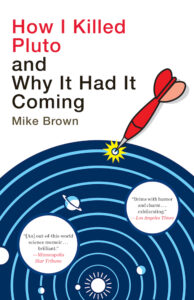
Switching back to our non-fictional reads, this is a tale told with great aplomb and with engagement that makes you want to read on. Dr Mike Brown – an
11: The Gospel of the Eels
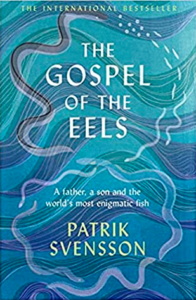
The Gospel of the Eels is a combined narrative of father and son and their relationship. A critical aspect of their relationship involved fishing for eels and through this mechanism, Svensson explores many tangents of this elusive creature and uses it as a means to explore our own familial relationships. Elegantly written and skillfully composed, this is a treat of a read – both enlightening and a provocation to self-reflection.
12: Why Sinatra Matters
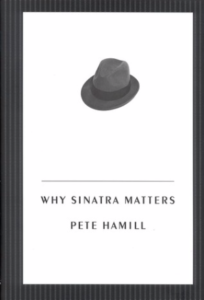
I cannot remember how I came across this one nor why it would have said read me. Yet, I was so glad to have found and enjoyed it. It’s a bit of a social survey is this one, looking deeply into what Sinatra represented and why he has had a lasting appeal. An appeal that changed over time and reached out to changing demographics. Eminently readable and yet full of deep thoughtfulness. It’s a unique treat and highly remembered. I don’t think I did a full review of this one and should well have.
13: The Salt Path
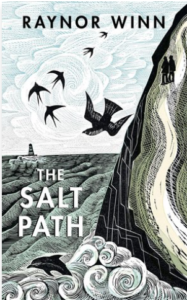
Eels and the Salt Path have a certain similarity and I was hard pushed on choosing between their eventual rank. Winn’s The Salt Path is a treasure of a read as well. The premise was an odd one – suddenly homeless, the protagonists, at a less than a sprightly stage in life decide to walk 600 miles tracing the shore of Devon. The recounting of the emotions, the challenges, the regrets, and the everyday happenings of an extraordinary journey make for an absolutely delightful read. This is a very ‘real’ story in the most real way and a very thought-provoking engagement. There is a full review at The Salt Path.
Double Fourteen: Sourdough
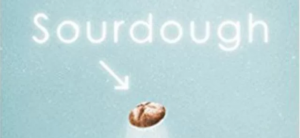
This is another old favourite and a re-read – at a time I needed some predictable uplift. Sourdough is a
Special Fifteen: The Piano Shop on the Left Bank
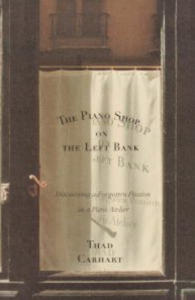
A lovely well-encapsulated tale with a genuine sense of the author in it. There’s a gradual unraveling that parallels the way in which the author is invited into a special place in the neighborhood. What really brought me into the tale is this sense of a cross between a Year in Provence and a Year in the Merde. There’s wonderful contextualising of the environment combined with some great tangents that fill in the reader on what we need to know about the brilliant breadth of the instrument through history and the importance of particular manufacturers. We see and learn through the eyes of the author and as part of the carefully told tale we are drawn into a pace and a privileged engagement with a locality and with a passion. Colourful, delectable, and purely enjoyable.
Sweet Sixteen: How To Stop Time
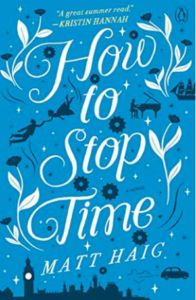
Matt Haig has occurred repeatedly throughout my reading list in the past few months and there may be a question of temporal bias, but I don’t think so. One can investigate the author’s own bio and find hints about why he may have a special intensity in his writing. Regardless of this, he has a very unique ability to convey an individual emotion on a larger scale. He can take a personal perspective and craft a tale that is revealing, thought-provoking, and ultimately deeply engaging.
How to Stop Time challenges our perception of how we see time and forces us to question our own existence. Like the other novels I have shared this year, this one causes deep introspection makes for a novel that really engages itself on you. Special.
A Svelte 17: Midnight at the Pera Palace: The Birth of Modern Istanbul
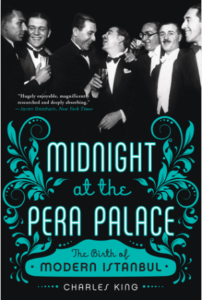
Using the Pera Palace (a special locality in a special metropolis), Charles King uses the hotel as a focus for an exploration of the birth of modern Istanbul. He tells a tale well and is an adept manager of tangents. The hotel is fascinating in its own regard, but as a mechanism to draw together the disparate tales of individuals and movements that came together during this hinge time in Turkish history, the author brings unique colour and atmosphere to the telling. Ripe with factoids and with special stories that draw the reader into a place in both geography and time, King delivers engagement and elucidation in quell measure and moves beyond something that could have been dry chronology into a spellbinding tapestry.
18: Five Points
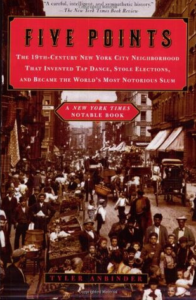
Another splendid re-read. If you don’t know this volume, it was the basis for Scorcese’s movie of the same name. Anbinder is a brilliant historian who does a ‘deep’ dive exploring the rich variety of records (official and unofficial) to bring to life the lives of those who experienced New York City’s Five Points. It colorfully tells the tale of a variety of ethnicities that made the area their own over a 70-year span and demonstrates that being a historian is far more than research – it’s the ability to experimentally embrace all forms of narrative in relating one’s findings and engaging an audience. Always a great read.
On the Medium in which we read
One of the other reflections I thought to consider is the nature of how I physically undertake the process of reading. I read on a Kindle Voyage and often am drawn into a discussion about the pros and cons of reading e-Ink rather than a physical book. I get slagged for not appreciating the tactility or smell of a physical volume. In fact, I desperately miss the manuscript book. Whether hardcover or paperback, I do appreciate the feel, smell, visual cues, and ability to easily share or add to a shelf that the physical book offers. The fact is though, my eyes have deteriorated to such an extent (extended screen time is probably a significant factor) that I have real trouble with the contrast and/or size of the print on-page. Newspapers are really tough now, but greying ink on greying paper is really tough for me unless I am under a really bright light and take off my glasses and hold the book scarily close. In

There are other advantages to the Kindle of course. I enjoy having more than one book to draw on (instantly); having a handy device than I can always conceal on my person and have available, as well, of course, being able to go on a whim online to use the dictionary, Wikipedia or other reference sources just by highlighting a word. Like the printed medium I do highlight passages quite frequently and occasionally make notes – something I was less prone to do when I had the physical book. I was one of those anti-defacers. It is of course easier for me to hold the light slim volume of the Kindle and walk (when in fact I do the bulk of my reading) and possibly also scarier – being able to walk after dark and keep reading. And those samples (their attempt to create a bookshop that lets you browse) do work although for me and certainly feed a reading habit.
But it is far harder to sense where you are in a Kindle book. Although the Kindle watches your reading speed and gives you a percentage completed, or time remaining in book cue – these assume that indices and notes will also be read thoroughly and at the same speed – you’d think they could easily fix that. I have noted that they do try to equate to physical pages now, but again you don’t know when you will hit the end of the narrative.
The bigger challenge as well is that you never get to own a book. Amazon can (and has for me) snatched back books when their license with a publisher changes, or you change location, or who knows what else. You are at their whim and because they use DRM you cannot (easily) just download and store the ebooks somewhere – without having the device always available that they are locked to. And the devices do fail. I am on my sixth or seventh device now and the last one a first-gen Voyage failed badly although after three years – but it was well taken care of it and it was the 3G radio that killed it. But Amazon likes to keep them ticking over. I crave an Oasis, but it is too big to stick in a pocket as I have done with all previously.
So a Kindle is a solution for me and a lifesaver because I do love to read and this has provided the solution. Now, if the bloody battery will just last a little longer…

Boy i hope you protect the yes too. What an unusual mix.thanks for sharing